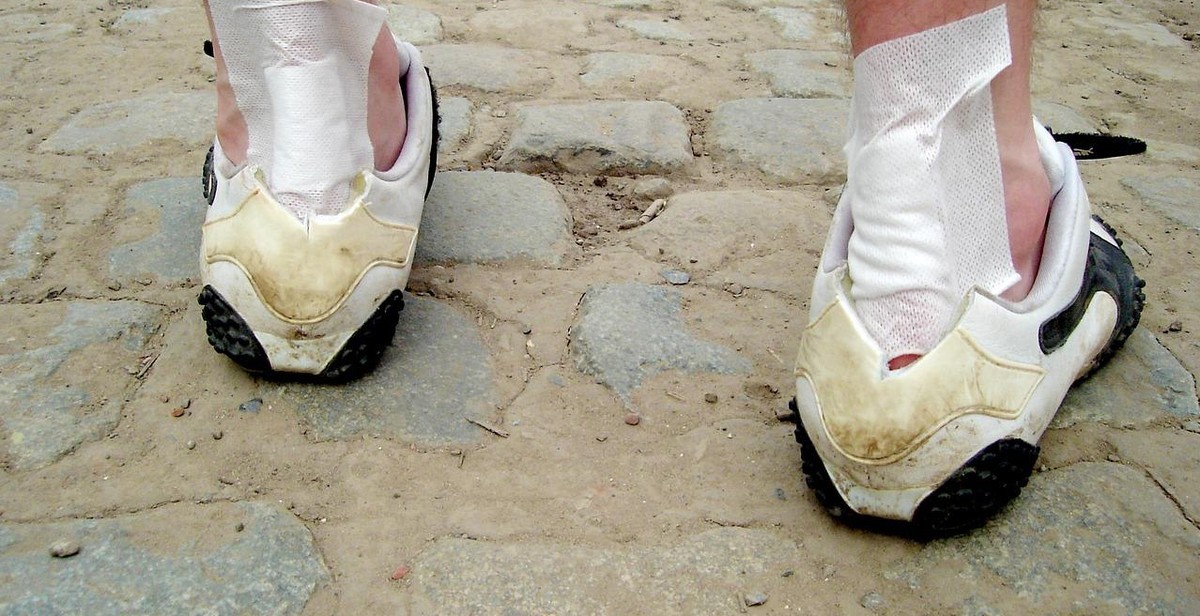How to Choose the Right Sports Shoes: Understanding Foot Types and Shoe Features
As an experienced athlete and professional content creator, I know how important it is to choose the right sports shoes. Wearing the right shoes not only enhances your performance but also protects you from injuries. However, with so many options available in the market, it can be overwhelming to choose the right pair.
In this article, I will guide you through the process of selecting the perfect sports shoes for your feet. We will start by understanding the different foot types and how they affect your shoe selection. We will then move on to explore the various features of sports shoes and how they can impact your performance.
Understanding Foot Types
Not all feet are created equal. Different foot types require different kinds of support and cushioning. In this section, we will discuss the three main foot types: flat feet, neutral feet, and high arches. We will also look at how to identify your foot type and what kind of shoes are best suited for your feet.
Exploring Shoe Features
Sports shoes come with a variety of features, such as cushioning, stability, and flexibility. In this section, we will examine each of these features and how they can impact your performance. We will also look at other factors, such as shoe size and fit, and how they can affect your comfort and safety.
By the end of this article, you will have a clear understanding of how to choose the right sports shoes for your feet and needs.

Why Choosing the Right Sports Shoes is Important
Choosing the right sports shoes is crucial for both preventing injuries and improving performance. Wearing the wrong shoes can lead to discomfort, pain, and even long-term damage to your feet and other parts of your body. Here are some reasons why choosing the right sports shoes is important:
Prevent Injuries
Wearing the wrong shoes during sports or exercise can put you at risk of various injuries. For example, if you have flat feet and wear shoes that don’t provide enough arch support, you may develop plantar fasciitis, which is a painful condition that affects the bottom of your foot. Similarly, if you have high arches and wear shoes that don’t provide enough cushioning, you may develop stress fractures in your feet or legs.
On the other hand, wearing shoes that are designed for your foot type can help prevent injuries. For example, if you have flat feet, you may benefit from shoes that have motion control features to help stabilize your feet and prevent overpronation. If you have high arches, you may benefit from shoes that have extra cushioning to absorb shock and reduce the impact on your feet and legs.
Improve Performance
Wearing the right sports shoes can also improve your performance. For example, if you’re a runner, wearing shoes that are designed for running can help you run faster and more efficiently. Running shoes are typically lightweight and have features like breathable mesh, cushioned soles, and a curved shape that helps you roll forward with each stride.
Similarly, if you play basketball, wearing shoes that are designed for basketball can help you jump higher and move more quickly on the court. Basketball shoes are typically high-top and have features like ankle support, good traction, and a cushioned sole that absorbs shock when you land from a jump.
Ultimately, choosing the right sports shoes can make a big difference in your comfort, performance, and overall well-being. By understanding your foot type and the features that are important for your chosen sport or activity, you can find the perfect pair of shoes that will help you achieve your goals and stay injury-free.

Understanding Foot Types
Choosing the right sports shoes can be a daunting task, especially if you don’t understand your foot type. Your foot type is determined by the height of your arch, which can be flat, high, or neutral.
Flat Feet
If you have flat feet, it means that your arches are low or non-existent. This can cause your feet to overpronate, meaning that they roll inward excessively when you walk or run. This can lead to a number of issues, including foot pain, shin splints, and knee problems.
When choosing sports shoes for flat feet, look for shoes with good arch support and motion control. These shoes will help to stabilize your feet and prevent overpronation. Avoid shoes that are too flexible, as they won’t provide the support you need.
High Arches
If you have high arches, it means that your arches are higher than average. This can cause your feet to underpronate, meaning that they roll outward when you walk or run. This can also lead to a number of issues, including foot pain, shin splints, and knee problems.
When choosing sports shoes for high arches, look for shoes with good cushioning and flexibility. These shoes will help to absorb shock and provide the support you need. Avoid shoes that are too stiff, as they won’t allow your feet to flex properly.
Neutral Feet
If you have neutral feet, it means that your arches are neither too high nor too low. This is the ideal foot type, as it means that your feet are well-balanced and can handle a variety of sports and activities.
When choosing sports shoes for neutral feet, look for shoes that provide a good balance of support and cushioning. These shoes will help to keep your feet comfortable and protected, no matter what sport or activity you’re doing.
| Foot Type | Recommended Shoe Features |
|---|---|
| Flat Feet | Good arch support and motion control |
| High Arches | Good cushioning and flexibility |
| Neutral Feet | Good balance of support and cushioning |
Understanding your foot type is an important step in choosing the right sports shoes. By selecting shoes that are designed for your foot type, you can help to prevent injuries and keep your feet comfortable and protected.
Shoe Features to Look For
When it comes to choosing the right sports shoes, there are several features that you should consider. These features include cushioning, support, flexibility, and breathability. Let’s take a closer look at each of these features:
Cushioning
Cushioning is one of the most important features to look for in sports shoes. It helps to absorb shock and reduce the impact on your joints. Shoes with good cushioning will help to prevent injuries and keep you comfortable during your workout. Look for shoes with a thick midsole and a cushioned insole for maximum comfort.
Support
Support is another important factor to consider when choosing sports shoes. Shoes with good support will help to prevent your feet from rolling inward or outward, which can cause injuries. Look for shoes with a firm heel counter and a supportive midsole to keep your feet stable and well-supported.
Flexibility
Flexibility is also important when it comes to sports shoes. Shoes that are too stiff can restrict your movement and cause discomfort, while shoes that are too flexible can lack the necessary support. Look for shoes that are flexible enough to allow natural movement, but still provide enough support for your feet.
Breathability
Breathability is another important feature to consider, especially if you plan on wearing your sports shoes for extended periods of time. Shoes with good breathability will help to keep your feet cool and dry, which can prevent blisters and other foot problems. Look for shoes with mesh or perforated uppers to allow for maximum airflow.
| Feature | Description |
|---|---|
| Cushioning | Helps to absorb shock and reduce impact on joints. |
| Support | Prevents feet from rolling inward or outward. |
| Flexibility | Allows natural movement while still providing support. |
| Breathability | Keeps feet cool and dry to prevent blisters and other foot problems. |
How to Choose the Right Sports Shoes: Understanding Foot Types and Shoe Features
Choosing the right sports shoes is crucial for both performance and injury prevention. With so many brands and styles available, it can be overwhelming to decide which one to buy. Here are some tips to help you choose the right sports shoes:
Get Your Feet Measured
Feet can change in size and shape over time, so it’s important to get them measured regularly. This will help you find shoes that fit well and provide the necessary support.
Consider Your Foot Type
There are three types of feet: flat, neutral, and high-arched. Knowing your foot type will help you choose shoes with the appropriate support and cushioning. Flat feet need shoes with good arch support, while high-arched feet need shoes with extra cushioning. Neutral feet can wear most types of shoes.
Try on Shoes in the Afternoon
Feet tend to swell throughout the day, so it’s best to try on shoes in the afternoon when your feet are at their largest. This will ensure that you get the right fit.
Test the Shoes on Different Surfaces
When trying on shoes, walk on different surfaces to see how they feel. This will help you determine if the shoes provide enough support and stability for your feet.
Replace Your Shoes Regularly
Sports shoes can wear out quickly, especially if you use them frequently. Replace your shoes every 300-500 miles or every 6-8 months, whichever comes first.
| Foot Type | Support Needed | Cushioning Needed |
|---|---|---|
| Flat | Good arch support | Extra cushioning |
| Neutral | Moderate arch support | Normal cushioning |
| High-arched | Less arch support | Extra cushioning |
